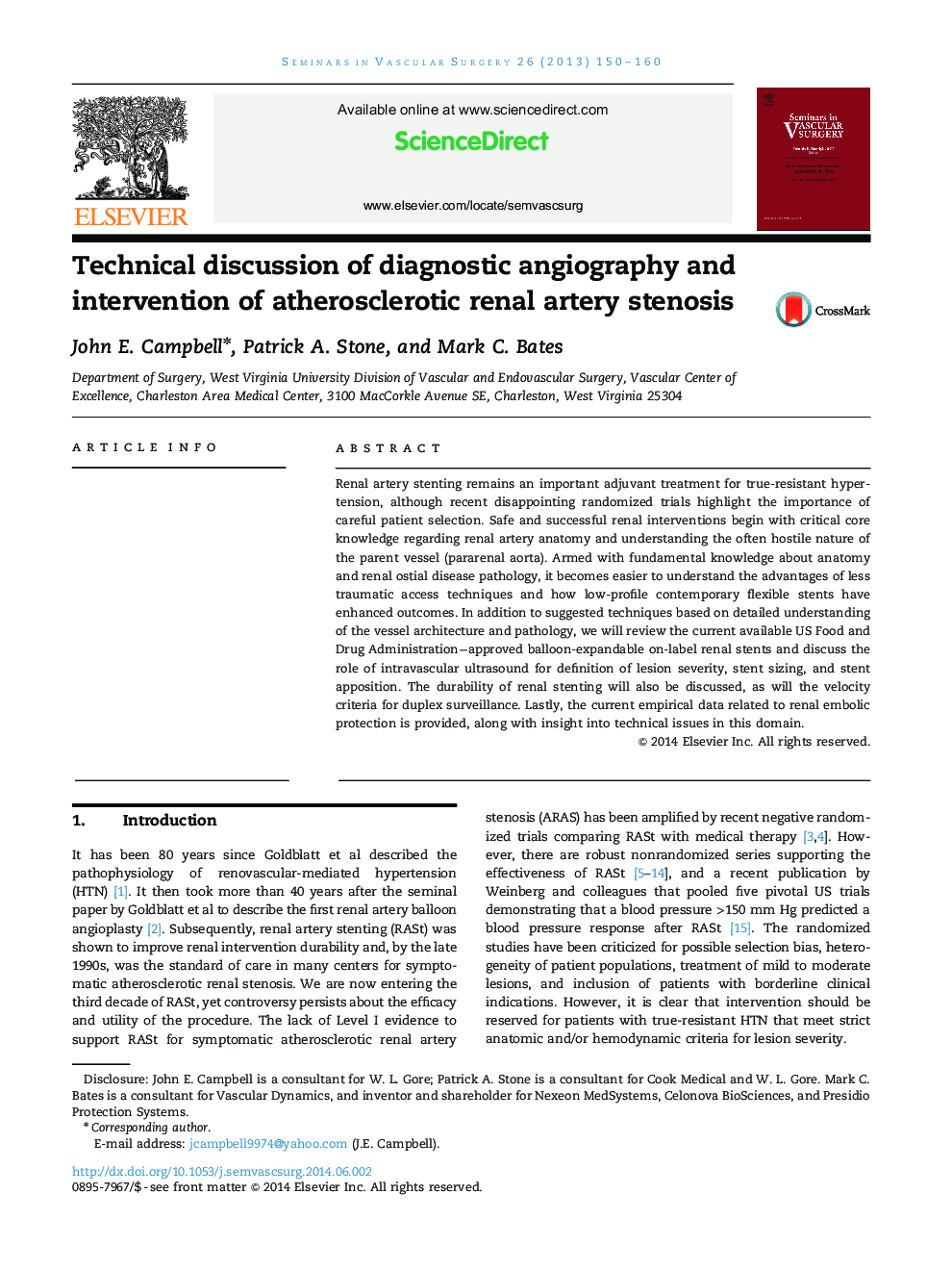| Article ID | Journal | Published Year | Pages | File Type |
|---|---|---|---|---|
| 3026108 | Seminars in Vascular Surgery | 2013 | 11 Pages |
Renal artery stenting remains an important adjuvant treatment for true-resistant hypertension, although recent disappointing randomized trials highlight the importance of careful patient selection. Safe and successful renal interventions begin with critical core knowledge regarding renal artery anatomy and understanding the often hostile nature of the parent vessel (pararenal aorta). Armed with fundamental knowledge about anatomy and renal ostial disease pathology, it becomes easier to understand the advantages of less traumatic access techniques and how low-profile contemporary flexible stents have enhanced outcomes. In addition to suggested techniques based on detailed understanding of the vessel architecture and pathology, we will review the current available US Food and Drug Administration−approved balloon-expandable on-label renal stents and discuss the role of intravascular ultrasound for definition of lesion severity, stent sizing, and stent apposition. The durability of renal stenting will also be discussed, as will the velocity criteria for duplex surveillance. Lastly, the current empirical data related to renal embolic protection is provided, along with insight into technical issues in this domain.
